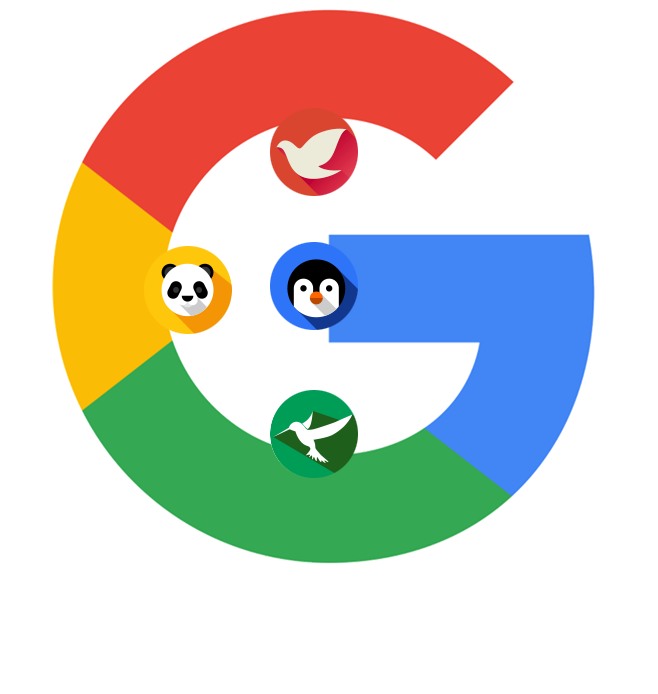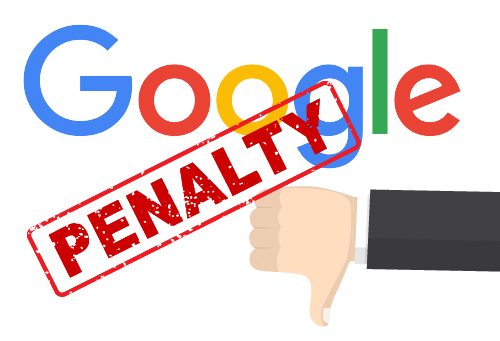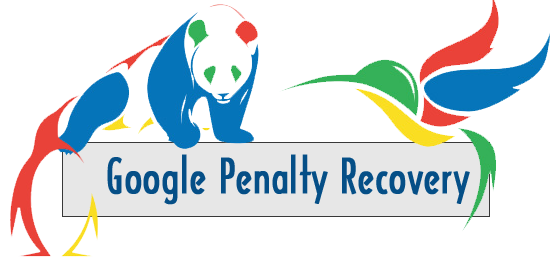Google Penalty Recovery involves identifying the cause of a search ranking drop and taking corrective action. It’s crucial to address violations of Google’s Webmaster Guidelines quickly.
Recovering from a Google penalty starts with understanding why your site was penalized. Google’s algorithms, such as Penguin and Panda, are designed to reward high-quality content and penalize sites that engage in practices against their guidelines, like keyword stuffing or link schemes.
As search engines evolve, they become adept at detecting such tactics, leading to penalties that can significantly impact your website’s visibility. Addressing these issues often requires a thorough audit of your site’s content and backlink profile. By identifying and resolving these problems, you can work towards restoring your site’s ranking in search results. It’s a meticulous process that demands attention to detail and a strategic approach to SEO practices.
Introduction To Google Penalties
Understanding Google penalties is crucial for website health. These penalties can drop your site’s ranking or remove it from search results. Knowing the types can help you avoid or fix them.
The Impact On Your Website
Google penalties hit your website hard. They lead to a loss in traffic. This means fewer visitors. Less traffic impacts sales and leads. Your online presence suffers. Recovering from a penalty takes time and effort. You must identify the cause, fix it, and wait for Google to re-evaluate your site.
Types Of Google Penalties
Google issues two main penalty types. Manual penalties come from a Google reviewer. They notice a guideline breach. Algorithmic penalties happen automatically. They are due to updates in Google’s algorithms.
| Penalty Type | Reason |
|---|---|
| Manual | Unnatural links, thin content |
| Algorithmic | Panda (content quality), Penguin (link quality) |

Credit: www.webindiamaster.com
Identifying The Penalty
When a website’s traffic drops suddenly, a Google penalty might be the cause. Recognizing the type of penalty is crucial for recovery. Two main penalty types exist: manual and algorithmic. Let’s explore how to identify each one.
Manual Vs. Algorithmic Penalties
Manual penalties come directly from Google’s spam team. A message in Google Search Console will alert you. Algorithmic penalties, on the other hand, result from updates to Google’s algorithms. No warnings accompany these penalties.
- Manual Penalties: Check Google Search Console for notifications.
- Algorithmic Penalties: Monitor traffic drops after Google updates.
Tools To Detect Penalties
Several tools help detect Google penalties. They track website traffic and search rankings. Here are top tools for penalty detection:
| Tool Name | Function |
|---|---|
| Google Search Console | Receives alerts for manual penalties |
| SEMrush Sensor | Monitors SERP volatility |
| MozCast | Tracks daily changes in Google’s algorithm |
| Ahrefs Alerts | Sends notifications for ranking changes |
Use these tools to pinpoint penalties and start recovery. Early detection is key to minimizing impact.
Key Reasons For Google Penalties
Understanding Google penalties is crucial for website health. Google aims to provide the best user experience. Sites that don’t meet standards might face penalties. Let’s explore key reasons for such penalties.
Duplicate Content Issues
Duplicate content confuses Google. It can’t decide which page to rank. This might lead to a penalty. Here are common duplicate content issues:
- Identical pages: Two or more pages with the same content.
- WWW vs. non-WWW: Site accessible from both versions without proper redirect.
- HTTP vs. HTTPS: Similar issue as WWW. Secure version preferred.
- Scraped content: Content copied from other sites without changes.
Use tools like Google Search Console to identify duplicates. Make sure to correct them promptly.
Unnatural Links To Your Site
Google penalizes for unnatural links. These are links that don’t follow Google’s guidelines. They include:
| Link Type | Details |
|---|---|
| Paid links | Exchanging money for links or posts. |
| Spammy links | Links from low-quality or irrelevant sites. |
| Link schemes | Excessive link exchanges or large-scale article marketing. |
Regularly audit your backlink profile. Remove or disavow bad links to avoid penalties.
Recovering From Content Penalties
Recovering from Content Penalties is crucial for website health. Google penalizes sites for poor content quality. This can hurt rankings. Effective recovery strategies are essential.
Auditing Your Content
An audit assesses content quality. It identifies issues causing penalties. This process is the first step to recovery.
- Check for duplicate content: Use tools to find copied sections.
- Review keyword usage: Avoid stuffing. Aim for natural inclusion.
- Assess user engagement: Low engagement might indicate poor content.
- Analyze backlink profiles: Toxic links can affect content credibility.
Steps To Revise And Improve Content
To revise content, follow these steps. They ensure quality and adherence to guidelines.
- Remove low-quality pages: Delete or rewrite them.
- Update outdated information: Keep content current and relevant.
- Enhance readability: Use short sentences and paragraphs.
- Optimize for keywords: Use them wisely and sparingly.
- Include multimedia: Add images and videos for better engagement.
- Improve user experience: Ensure fast loading and mobile-friendliness.
| Issue | Action | Impact |
|---|---|---|
| Duplicate Content | Rewrite or Remove | Reduces Penalty Risk |
| Keyword Stuffing | Optimize Keyword Density | Improves Readability |
| Poor User Engagement | Enhance Content Value | Boosts Engagement |
Revising content can be demanding. Yet, it’s vital for recovering from penalties. Follow these steps for a stronger online presence.
Fixing Link-related Penalties
Google penalties can significantly impact your website’s visibility and traffic. Fixing link-related penalties is crucial to regain your standing. Understand the steps involved to identify and rectify these issues quickly and effectively.
Identifying Bad Links
Firstly, review your site’s backlink profile. Use tools like Google Search Console to pinpoint suspicious links. Look for signals such as:
- Links from low-quality or spammy websites
- Irrelevant links unrelated to your content
- Links with over-optimized anchor text
Document all bad links for further action.
Removing And Disavowing Links
Once identified, take steps to remove bad links. Reach out to webmasters and request link removal. If unsuccessful, use Google’s Disavow Tool.
- Create a disavow file with all bad links.
- Submit it through the Disavow Tool in Google Search Console.
This tells Google to ignore these links when assessing your site. Monitor your site’s performance post-submission for any changes.
Improving Site Usability
Improving Site Usability is a crucial step in recovering from a Google penalty. A user-friendly site retains visitors, reduces bounce rates, and satisfies Google’s algorithms. Focus on enhancing mobile-friendliness and page speed to boost usability.
Mobile-friendliness
Today, most web traffic comes from mobile devices. Sites must perform well on phones and tablets. Google prioritizes mobile-friendly sites in search results.
- Use responsive design for flexible layouts.
- Ensure text is readable without zooming.
- Place links far enough apart for easy tapping.
Test your site with Google’s Mobile-Friendly Test tool. It identifies mobile usability issues and provides solutions.
Page Speed Optimization
Fast-loading pages keep users happy. Google uses page speed as a ranking signal. Slow pages can lead to penalties.
- Compress images to reduce file sizes.
- Minimize code and use browser caching.
- Upgrade to a faster hosting service if needed.
Use Google’s PageSpeed Insights to find speed bottlenecks. It offers actionable advice for improvements.
Re-submitting Your Site To Google
After addressing issues that led to a Google penalty, it’s crucial to re-submit your site. This tells Google you’ve fixed the problems. A successful re-submission can restore your site’s ranking and visibility.
The Reconsideration Request Process
Google provides a reconsideration request option. This is your chance to explain the corrections made. It’s a direct appeal to Google to review your site again.
- Identify the penalty reasons.
- Fix all the issues thoroughly.
- Document all the changes you’ve made.
- Submit a detailed reconsideration request.
- Wait for Google to review your site.
What To Include In Your Request
A strong reconsideration request is transparent and detailed. It should clearly show all the steps you’ve taken to rectify the issues.
- Specific details of the changes made
- Documentation to support your claims
- Proof of removed bad links or content
- A commitment to following Google’s guidelines
| Section | Details to Include |
|---|---|
| Introduction | Site name, owner, and what the site is about |
| Issues Fixed | List of penalties and corrective actions taken |
| Supporting Evidence | Screenshots, links to documentation |
| Future Plans | Steps to prevent future penalties |

Credit: www.seoserviceagency.com.au
Preventing Future Penalties
Preventing future penalties is key to a site’s longevity. Google’s algorithm updates can affect your rankings. To stay ahead, you must maintain your site proactively. Let’s dive into how to keep your link profiles clean and your content fresh.
Maintaining Healthy Link Profiles
Links are vital for SEO. Yet, bad links hurt your site. You must check your backlinks regularly. Use tools to identify and remove harmful links. Aim for high-quality, relevant backlinks. This strengthens your site’s trust with Google.
Regular Content Audits
Content audits boost your site’s health. They involve checking all content. You should update outdated information. Remove duplicate pages. Fix or remove broken links. Ensure all content is original and useful. This keeps your site fresh for users and Google.
| Action | Benefit |
|---|---|
| Remove spammy backlinks | Improves link profile quality |
| Update old posts | Keeps information relevant |
| Fix broken links | Enhances user experience |
- Use Google Search Console to track links
- Set a schedule for regular audits
- Stay updated with Google’s guidelines
By following these steps, your site stays healthy. It avoids future Google penalties. This ensures steady traffic and rankings.
Monitoring Your Recovery Progress
After a Google penalty, recovery is your top goal. Monitoring your recovery progress is key. Let’s dive into how to keep track and see improvements.
Setting Up Proper Tracking
First, set up tracking tools. Tools like Google Analytics and Search Console are your friends. They help you see your website’s health.
- Google Analytics: Shows visitor behavior.
- Search Console: Tracks website performance in search.
Make sure both are in place. This way, you catch every detail.
Analyzing Recovery Over Time
Next, watch your progress. Recovery can take time. Use data to guide you.
- Check rankings weekly.
- Measure traffic changes.
- Look at user behavior on your site.
Graphs and tables in tracking tools show trends. Spot recovery signs early.
| Week | Ranking Position | Site Traffic | User Behavior |
|---|---|---|---|
| 1 | 50 | Low | Short visits |
| 4 | 30 | Improving | Longer visits |
| 8 | 20 | Higher | More interactions |
By tracking, you see what works. Adjust your strategy based on data. Soon, you’ll recover from the penalty. Remember, patience and careful monitoring are your tools for success.
Real-life Success Stories
Real-Life Success Stories of Google Penalty Recovery show hope. They prove that with the right steps, you can bounce back stronger. These stories are about two businesses. One faced a manual penalty. The other dealt with an algorithmic penalty. Both beat the odds.
Case Study 1: Overcoming A Manual Penalty
A small e-commerce site selling handmade goods faced a nightmare. Google slapped them with a manual penalty for unnatural links. Sales plummeted overnight.
- Challenge: Remove bad links.
- Action: Reviewed backlink profile. Requested link removals. Submitted a reconsideration request to Google.
- Result: Penalty lifted in 45 days. Traffic and sales recovered in 3 months.
Case Study 2: Recovering From An Algorithmic Penalty
A tech blog lost half its traffic after a Google algorithm update. They didn’t know why at first.
- Analyzed: Used tools to find issues.
- Fixed: Improved site speed. Made content better. Fixed broken links.
- Outcome: Traffic returned to pre-penalty levels in 4 months.

Credit: utahseopros.com
Frequently Asked Questions
How Long Does The Google Penalty Last?
The duration of a Google penalty varies. It can last from a few days to indefinitely, until the issues are resolved and a reconsideration request is approved by Google.
What Is A Google Penalty?
A Google penalty is a punitive action against a website that violates Google’s Webmaster Guidelines, often resulting in reduced search rankings or removal from search results.
How Do I Check My Google Penalty Check?
To check for a Google penalty, log into Google Search Console. Navigate to the “Security & Manual Actions” section, then click on “Manual Actions. ” Here, you’ll see any penalties applied to your site. Regularly monitoring this section helps you stay informed about your site’s status.
How To Avoid Google Penalties?
To avoid Google penalties, ensure your website content is original and valuable. Follow Google’s Webmaster Guidelines closely. Use ethical SEO practices, avoiding keyword stuffing and hidden text. Regularly update your site with fresh, high-quality content. Build natural backlinks without resorting to schemes.
What Triggers A Google Penalty?
A Google penalty can be triggered by practices that violate Google’s Webmaster Guidelines, such as keyword stuffing, cloaking, or using low-quality backlinks.
How To Identify A Google Penalty?
You can identify a Google penalty by a sudden drop in search rankings or a notification in Google Search Console about a manual action.
What Is A Manual Google Penalty?
A manual Google penalty is a sanction applied by a Google reviewer when they determine that a site is non-compliant with their guidelines.
How Long Does Penalty Recovery Take?
Recovery from a Google penalty can range from a few weeks to several months, depending on the severity of the issues and the speed of their resolution.
Can You Avoid Google Penalties?
Yes, you can avoid Google penalties by adhering to Google’s Webmaster Guidelines and focusing on creating high-quality content and user experience.
What Is An Algorithmic Google Penalty?
An algorithmic Google penalty occurs when a site’s rankings drop due to an update to Google’s search algorithms detecting non-compliant practices.
Conclusion
Recovering from a Google penalty may seem daunting, but it’s entirely possible with the right approach. By identifying the issues, making the necessary corrections, and consistently following best practices, your site can regain its rankings. Remember, patience and persistence are key to navigating this journey back to SEO health.
Keep learning and adapting to ensure your site remains in good standing with Google.

